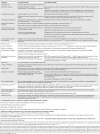Ebola outbreak in Guinea, 2021: Clinical care of patients with Ebola virus disease
- PMID: 36756241
- PMCID: PMC9900378
- DOI: 10.4102/sajid.v38i1.454
Ebola outbreak in Guinea, 2021: Clinical care of patients with Ebola virus disease
Abstract
Background: Experience from the Zaire Ebolavirus epidemic in the eastern Democratic Republic of the Congo (2018-2020) demonstrates that early initiation of essential critical care and administration of Zaire Ebolavirus specific monoclonal antibodies may be associated with improved outcomes among patients with Ebola virus disease (EVD).
Objectives: This series describes 13 EVD patients and 276 patients with suspected EVD treated during a Zaire Ebolavirus outbreak in Guinea in 2021.
Method: Patients with confirmed or suspected EVD were treated in two Ebola treatment centres (ETC) in the region of N'zérékoré. Data were reviewed from all patients with suspected or confirmed EVD hospitalised in these two ETCs during the outbreak (14 February 2021 - 19 June 2021). Ebola-specific monoclonal antibodies, were available 2 weeks after onset of the outbreak.
Results: Nine of the 13 EVD patients (age range: 22-70 years) survived. The four EVD patients who died, including one pregnant woman, presented with multi-organ dysfunction and died within 48 h of admission. All eight patients who received Ebola-specific monoclonal antibodies survived. Four of the 13 EVD patients were health workers. Improvement of ETC design facilitated implementation of WHO-recommended 'optimized supportive care for EVD'. In this context, pragmatic clinical training was integrated in routine ETC activities. Initial clinical manifestations of 13 confirmed EVD patients were similar to those of 276 patients with suspected, but subsequently non confirmed EVD. These patients suffered from other acute infections (e.g. malaria in 183 of 276 patients; 66%). Five of the 276 patients with suspected EVD died. One of these five patients had Lassa virus disease and a coronavirus disease 2019 (COVID-19) co-infection.
Conclusion: Multidisciplinary outbreak response teams can rapidly optimise ETC design. Trained clinical teams can provide WHO-recommended optimised supportive care, including safe administration of Ebola-specific monoclonal antibodies. Pragmatic training in essential critical care can be integrated in routine ETC activities.
Contribution: This article describes clinical realities associated with implementation of WHO-recommended standards of 'optimized supportive care' and administration of Ebola virus specific treatments. In this context, the importance of essential design principles of ETCs is underlined, which allow continuous visual contact and verbal interaction of health workers and families with their patients. Elements that may contribute to further quality of care improvements for patients with confirmed or suspected EVD are discussed.
Keywords: Ebola vaccination; Ebola-specific monoclonal antibodies; Lassa virus disease; Zaire Ebolavirus disease essential emergency and critical care; referral pathways.
© 2023. The Authors.
Conflict of interest statement
The authors declare that they have no financial or personal relationships that may have inappropriately influenced them in writing this article.
Figures


References
-
- WHO . Ebola viral disease; key facts [homepage on the Internet]. 2021. [cited 2023 Jan 05]. Available from: https://www.who.int/news-room/fact-sheets/detail/ebola-virus-disease
-
- ALIMA . CUBE: The biosecure emergency care unit [homepage on the Internet]. 2021. [cited 2023 June 06]. Available from: https://alima.ngo/en/cube/
Grants and funding
LinkOut - more resources
Full Text Sources
